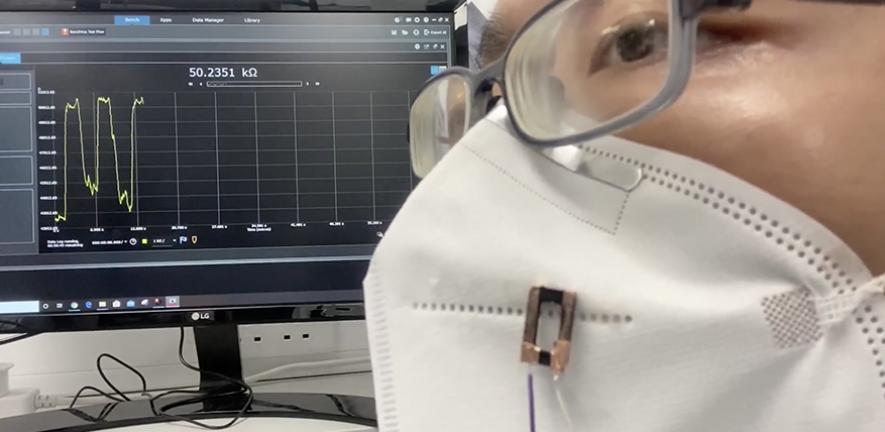
From capturing your breath to guiding biological cell movements, 3D printing of tiny, transparent conducting fibers could be used to make devices that can 'smell, hear and touch' – making it particularly useful for health monitoring, Internet of Things and biosensing applications.
Researchers at the University of Cambridge in the UK used 3D printing, also known as additive manufacturing, to produce electronic fibers – each 100 times thinner than a human hair – for creating sensors beyond the capabilities of conventional film-based devices.
This fiber-printing technique, reported in a paper in Science Advances, can be used to make non-contact, wearable, portable respiratory sensors. These printed sensors are high-sensitivity, low-cost and can be attached to a mobile phone to collect sound, images and breath pattern information all at the same time.
First author Andy Wang, a PhD student from Cambridge's Department of Engineering, used the fiber sensor to test the amount of breath moisture that leaked through face masks during normal breathing, rapid breathing and simulated coughing. The fiber sensors significantly outperformed comparable commercial sensors, especially in monitoring rapid breathing, which replicates shortness of breath.
This novel fiber sensor has not been specifically designed to detect viral particles. But since scientific evidence increasingly points to the fact that viral particles such as coronavirus can be transmitted through respiratory droplets and aerosols, measuring the amount and direction of breath moisture that leaks through different types of face mask could identify 'weak' points in the protection.
The researchers found that most leakage from fabric or surgical masks comes from the front, especially during coughing, while most leakage from N95 masks with tight fittings comes from the top and sides. Nonetheless, both types of face masks, when worn properly, help to weaken the flow of exhaled breath.
"Sensors made from small conducting fibers are especially useful for volumetric sensing of fluid and gas in 3D, compared to conventional thin film techniques, but so far, it has been challenging to print and incorporate them into devices, and to manufacture them at scale," said Yan Yan Shery Huang from Cambridge's Department of Engineering, who led the research.
Huang and her colleagues 3D printed the composite fibers, which are made from silver and/or semiconducting polymers. This fiber-printing technique creates a core-shell fiber structure, with a high-purity conducting core wrapped in a thin protective polymer sheath, similar to the structure of common electrical wires but at a scale of a few micrometres in diameter.
In addition to the respiratory sensors, this printing technique can also be used to make biocompatible fibers of a similar dimension to biological cells, which could guide cell movements and 'feel' this dynamic process as electrical signals. Also, the fibers are so tiny that they are invisible to the naked eye; when used to connect small electronic elements in 3D, it would seem that the electronics are 'floating' in mid-air.
"Our fiber sensors are lightweight, cheap, small and easy to use, so they could potentially be turned into home-test devices to allow the general public to perform self-administered tests to get information about their environments," said Huang.
The team is looking to develop this fiber-printing technique for a number of multi-functional sensors, which could potentially detect more breath species for mobile health monitoring or for bio-machine interface applications.
This story is adapted from material from the University of Cambridge, with editorial changes made by Materials Today. The views expressed in this article do not necessarily represent those of Elsevier. Link to original source.


